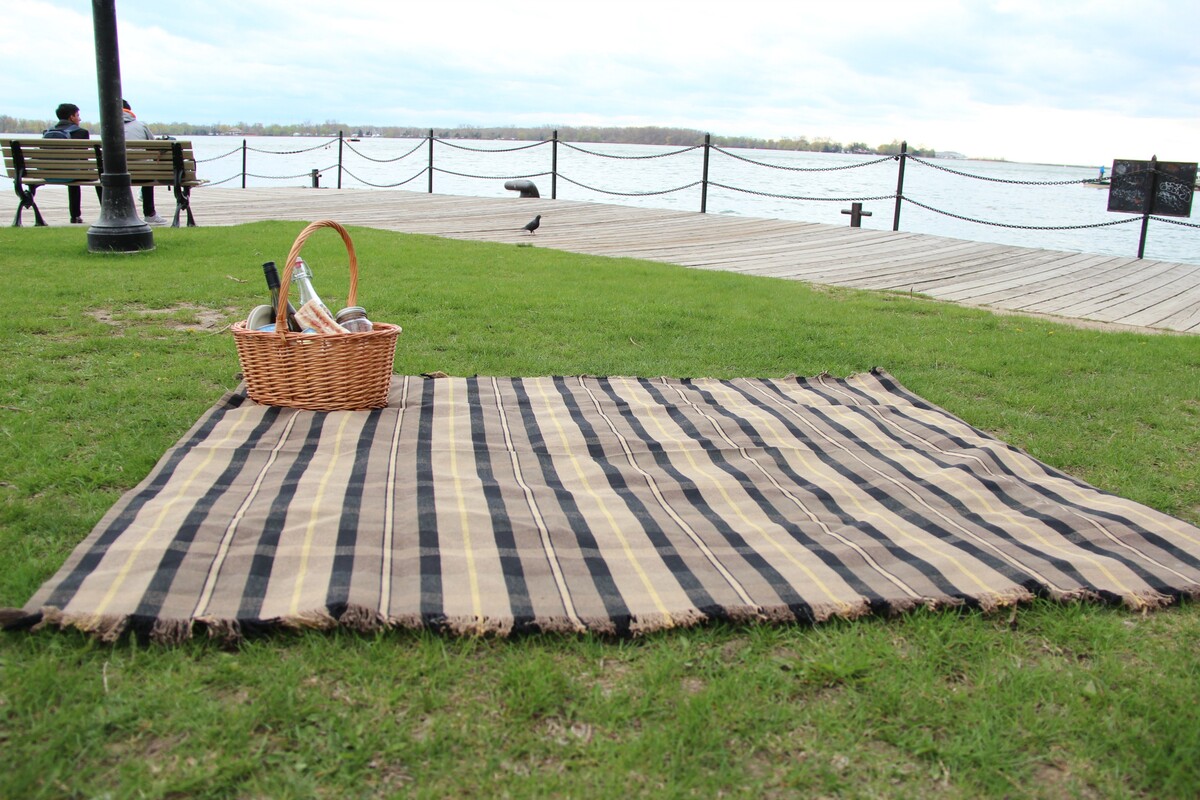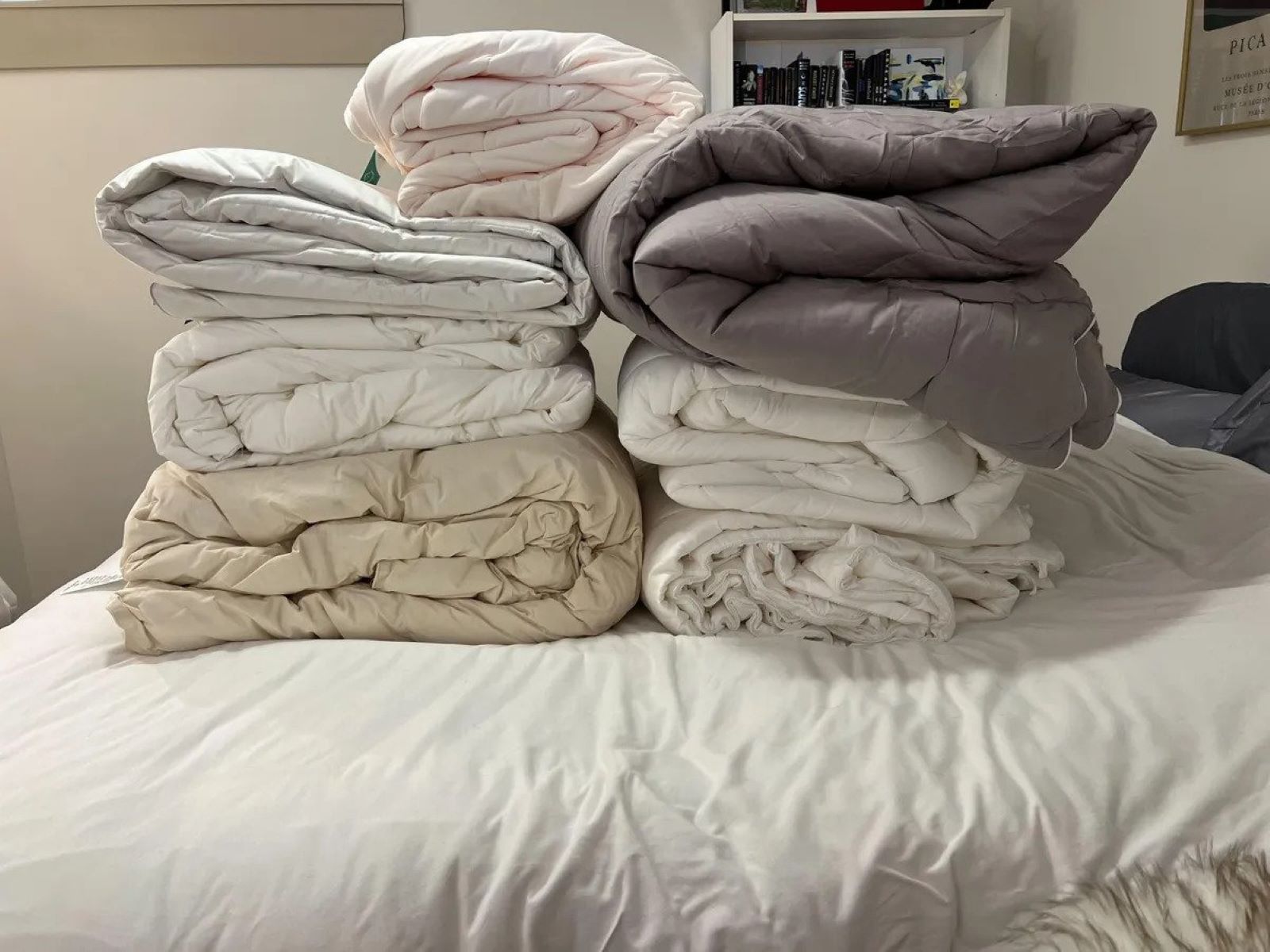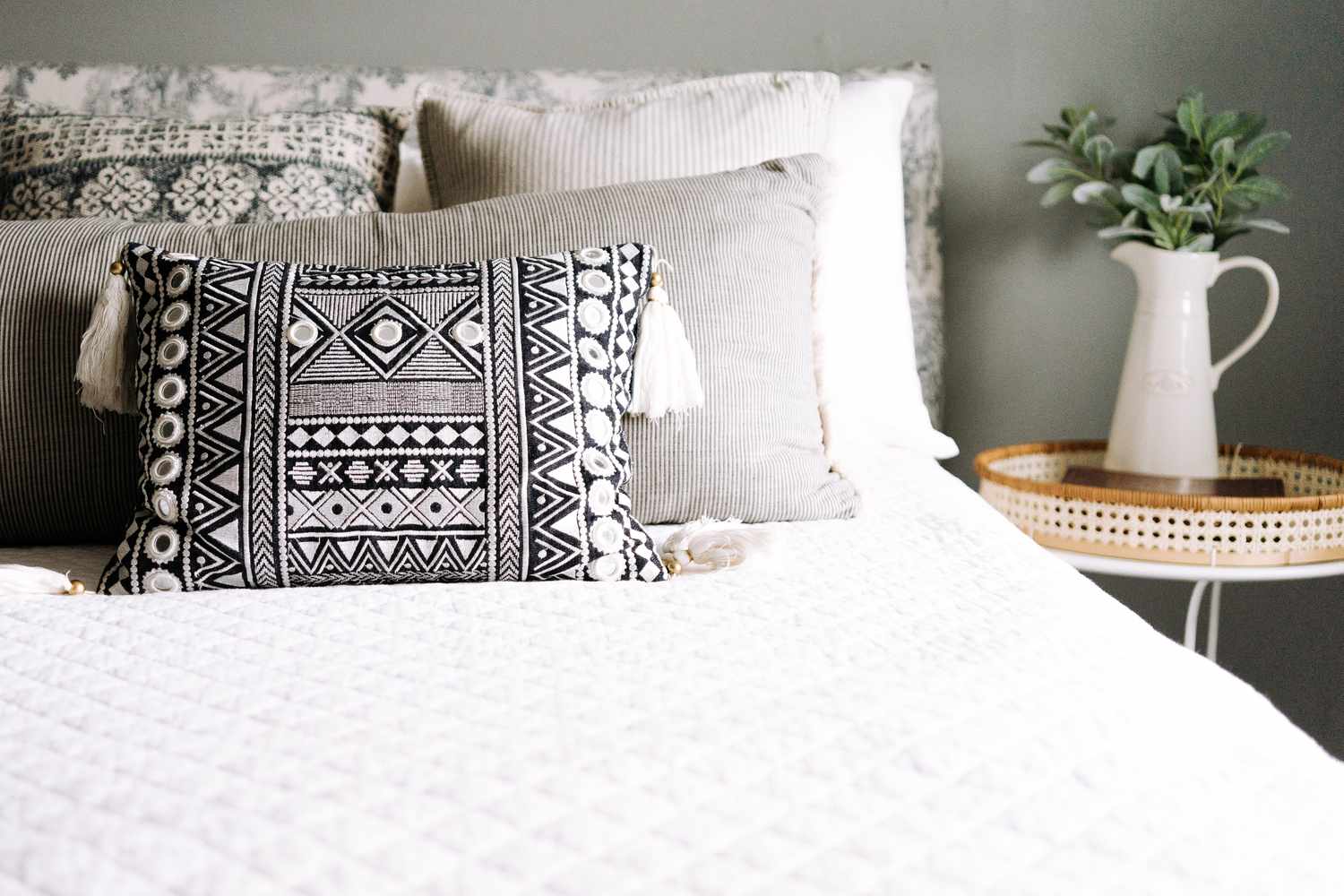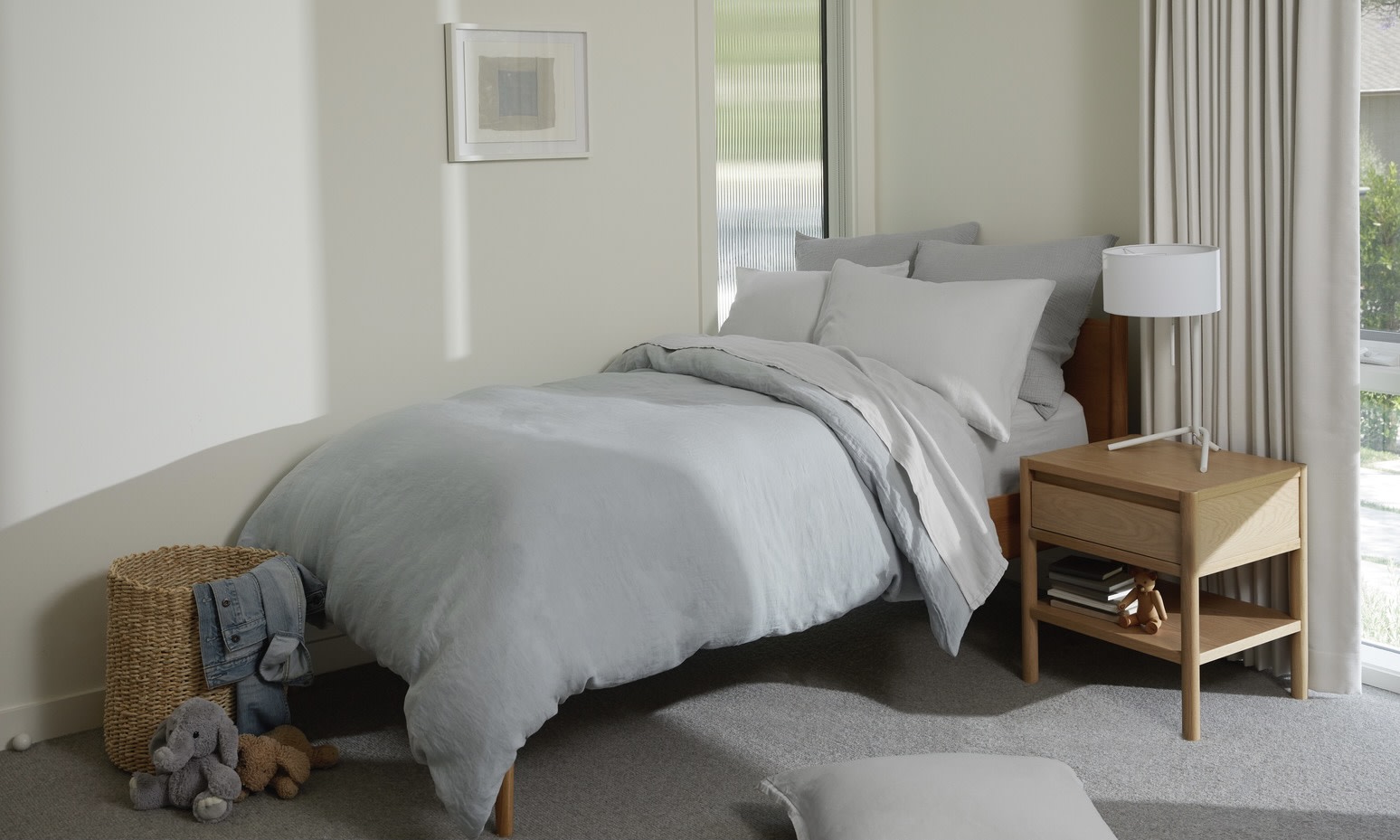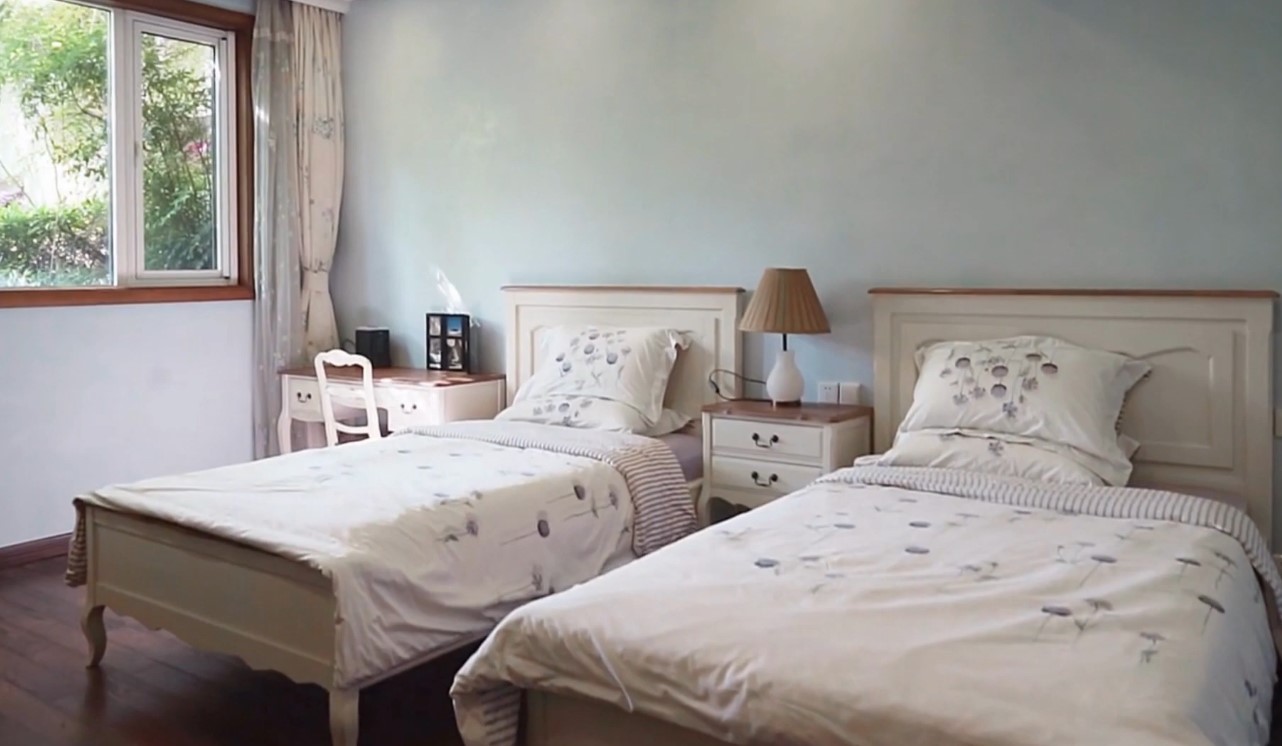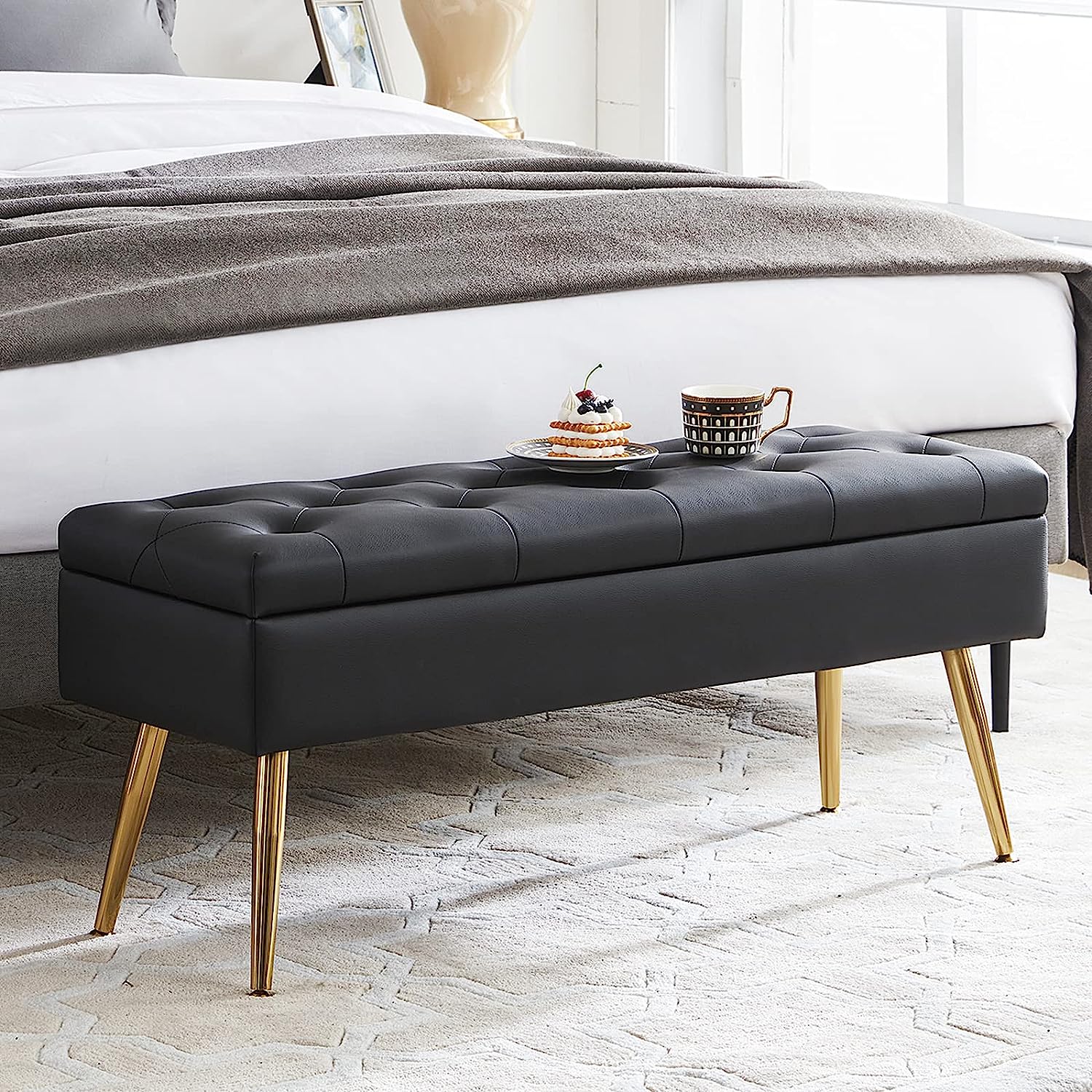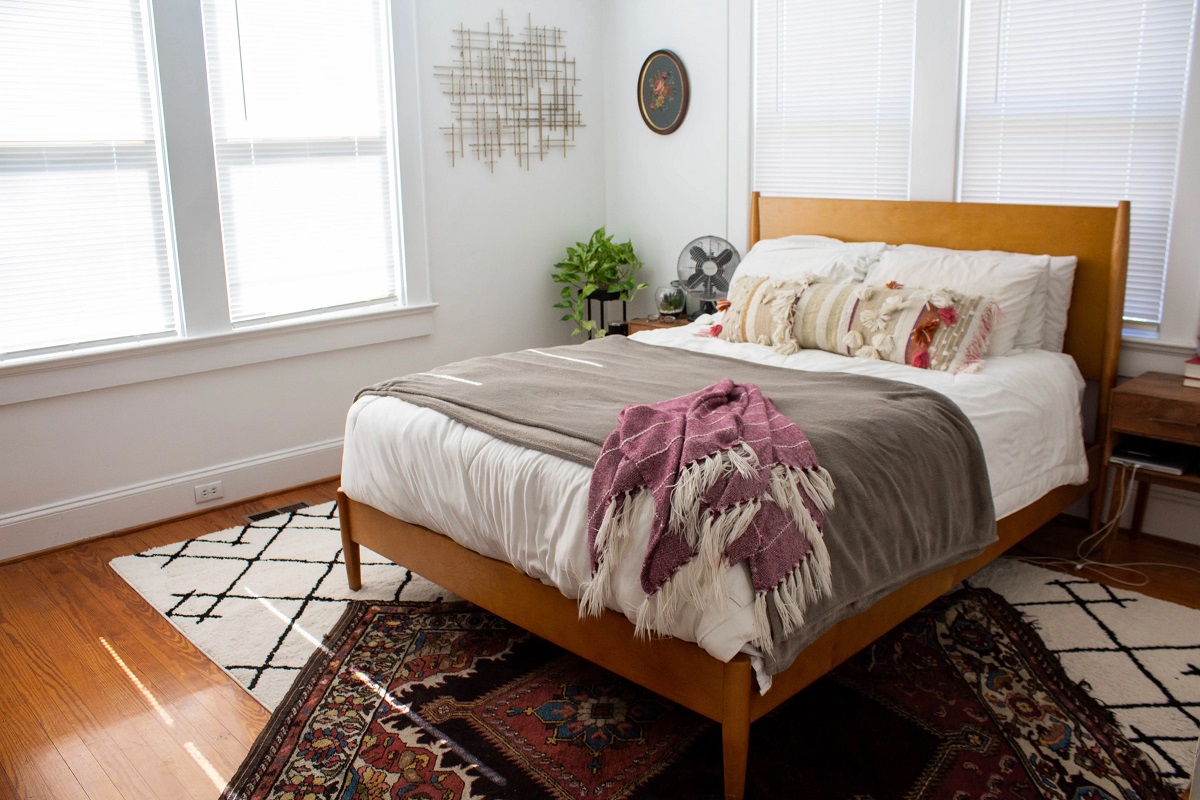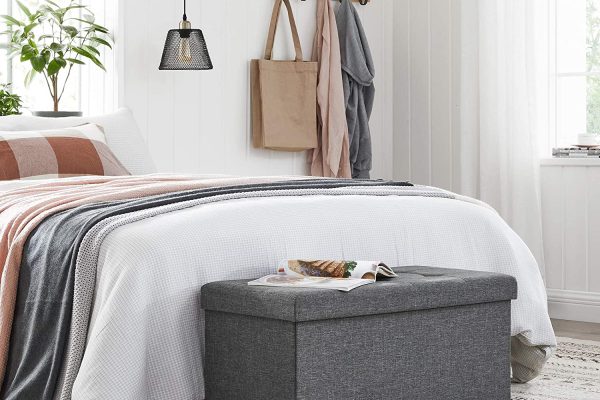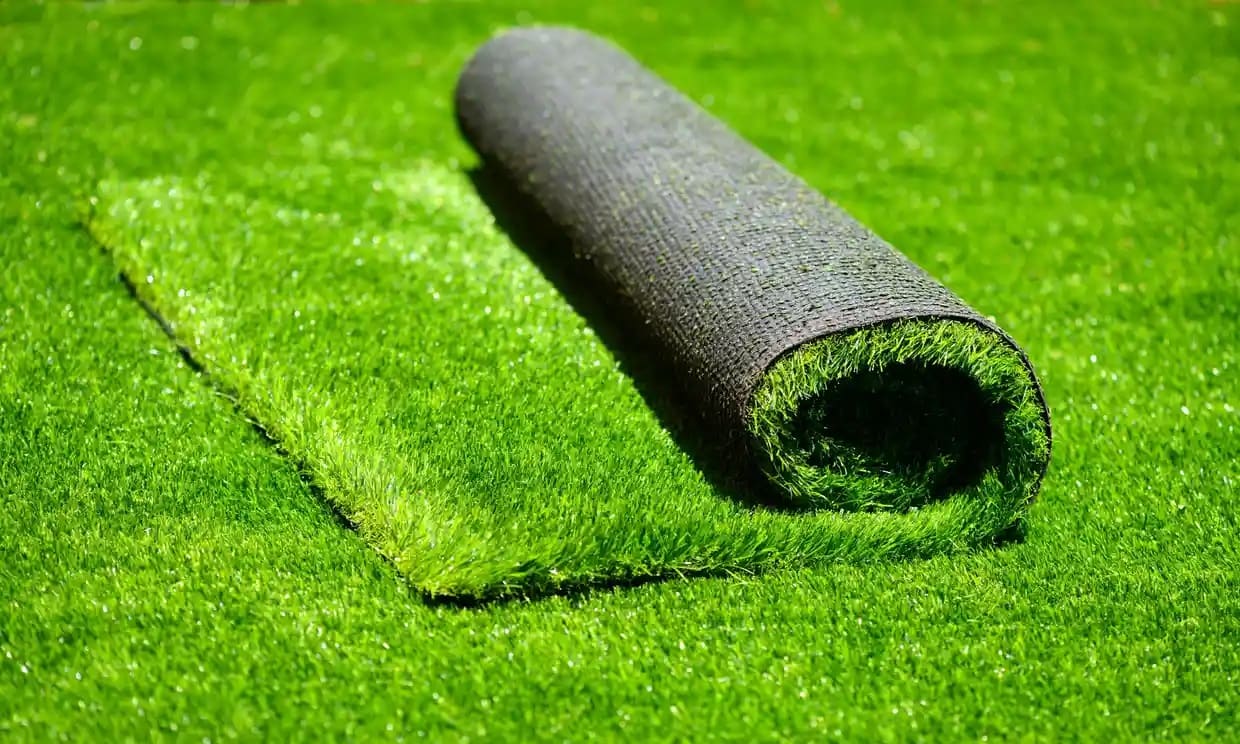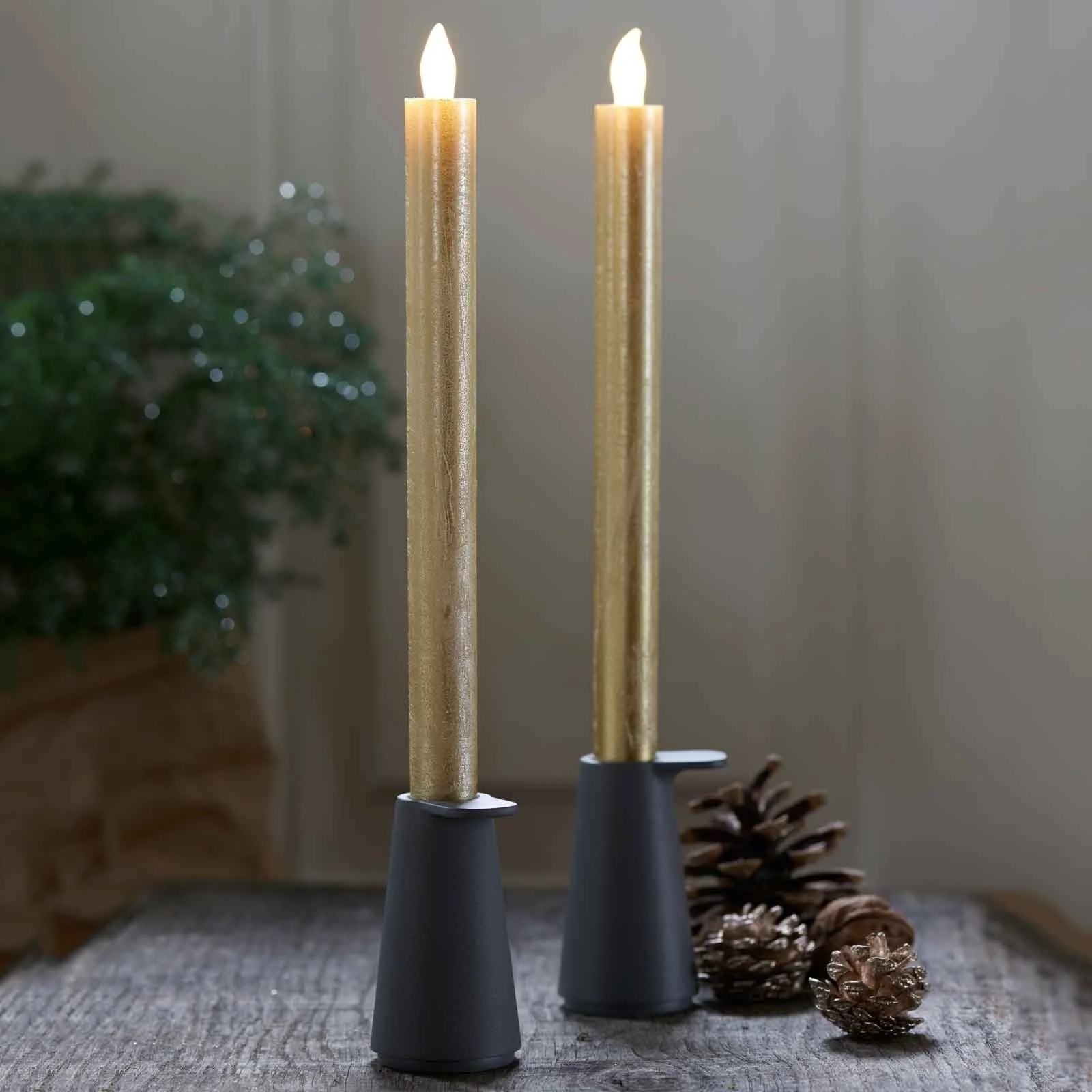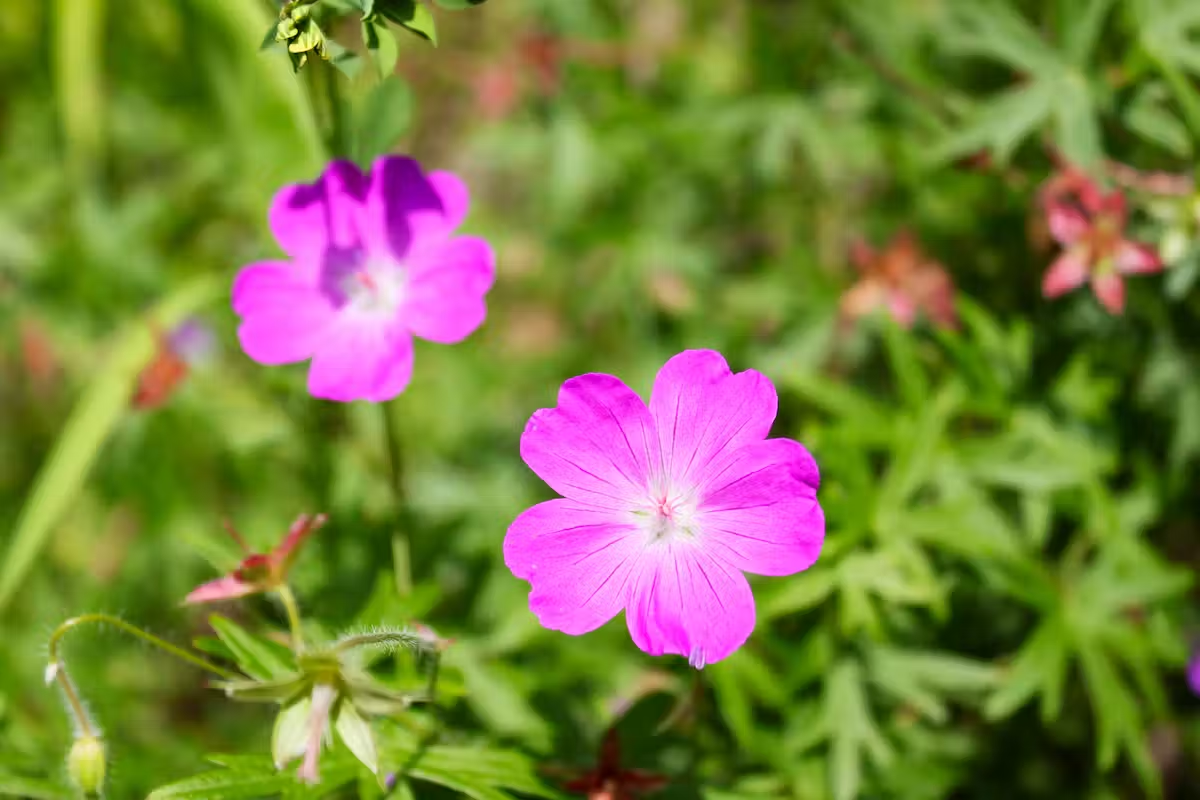Home>Articles>What Is The Blanket At The End Of A Bed Called
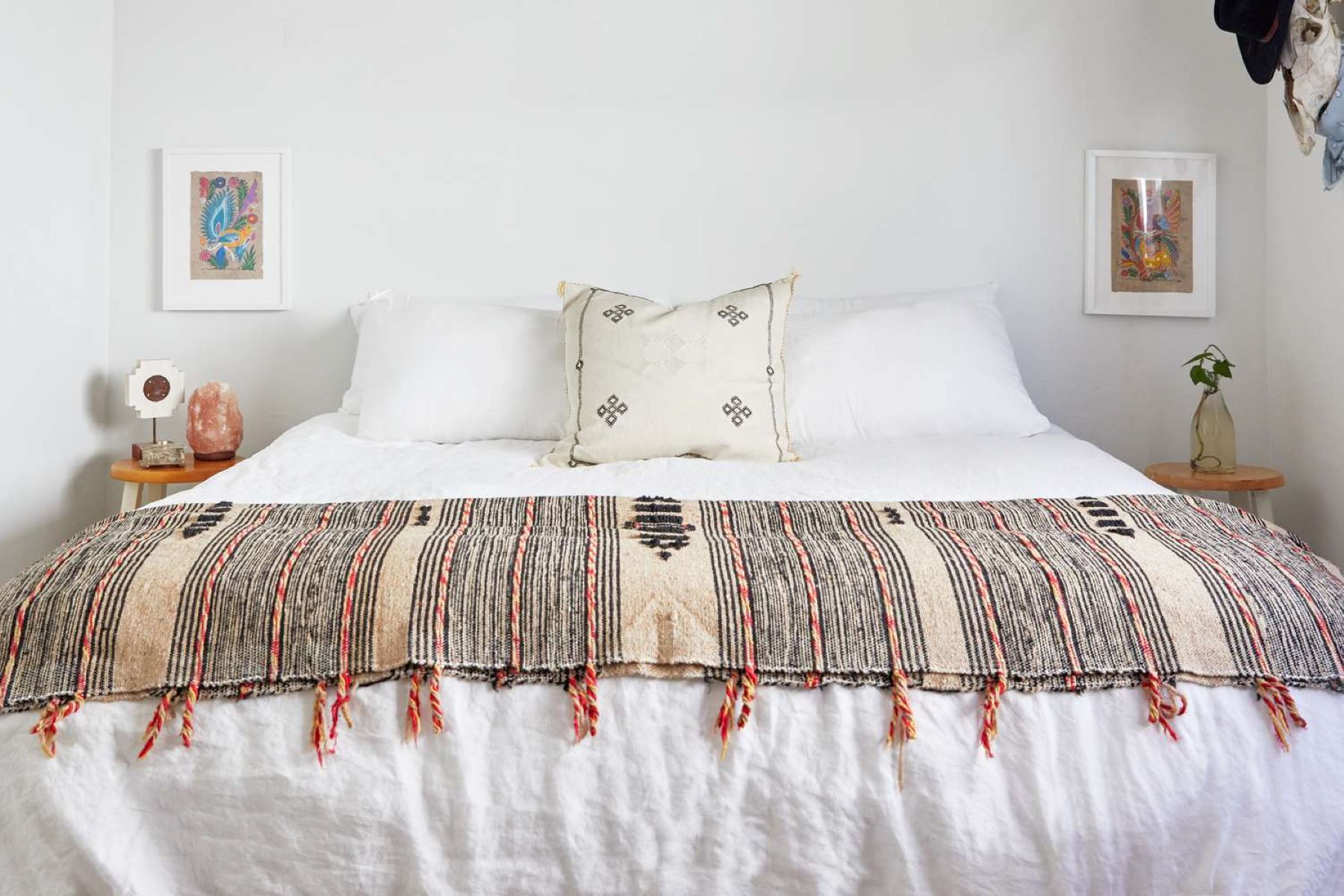

Articles
What Is The Blanket At The End Of A Bed Called
Modified: January 9, 2024
Discover the answer to the question "What is the blanket at the end of a bed called?" in our informative articles.
(Many of the links in this article redirect to a specific reviewed product. Your purchase of these products through affiliate links helps to generate commission for Storables.com, at no extra cost. Learn more)
Introduction
When it comes to creating a cozy and inviting bedroom, one element that often adds a touch of warmth and style is the blanket at the end of the bed. This versatile accessory not only serves a practical purpose but also adds an aesthetic appeal to the overall look of the bed. The blanket at the end of a bed is like the cherry on top, bringing comfort and visual interest to the space.
But have you ever wondered what the blanket at the end of a bed is actually called? Is there a specific term for this delightful addition to our sleeping sanctuary? In this article, we will explore the various names, functions, and cultural significance of the blanket at the end of a bed.
So, let’s dive in and unravel the mystery behind this beautiful and functional bedroom accessory.
Key Takeaways:
- The blanket at the end of a bed, also known as a bed runner or bed scarf, serves both practical and aesthetic purposes, adding warmth, style, and visual interest to the bedroom while protecting the main bedding.
- From indigenous textile traditions to regional aesthetics and symbolic meanings, the blanket at the end of a bed reflects the diverse tapestry of our global heritage, offering endless possibilities for personal expression and cultural significance.
Read more: What Is The End Of An Electrical Cord Called
Definition of the Blanket at the End of a Bed
The blanket at the end of a bed, also known as a bed runner or bed scarf, is a decorative and functional piece of fabric that is placed horizontally or diagonally across the foot of the bed. It is typically smaller in size compared to the main bedding, such as the comforter or duvet, and serves as an additional layer of warmth and visual interest.
Unlike a traditional blanket that covers the entire bed, the blanket at the end of a bed is designed to enhance the overall aesthetics of the bedroom. It adds a finishing touch, creating a focal point and elevating the look of the bed. It can be used to complement the color scheme of the room, tie together different design elements, or introduce patterns and textures.
Bed runners or bed scarves are often made from a variety of fabrics, including cotton, linen, silk, or even faux fur, allowing for different textures and levels of coziness. They come in various sizes, shapes, and designs to suit different bed sizes and personal preferences.
Overall, the blanket at the end of a bed is a versatile accessory that not only adds style but also provides an extra layer of warmth and comfort during cooler nights. Its placement at the foot of the bed makes it easily accessible, allowing for easy use whenever needed.
Purpose and Function of the Blanket at the End of a Bed
The blanket at the end of a bed serves both practical and aesthetic purposes, making it a valuable addition to any bedroom. Let’s explore the various functions it serves:
1. Added Warmth: One of the primary functions of the blanket at the end of a bed is to provide an extra layer of warmth during colder nights. This is particularly useful for those who may only require a lighter covering for their feet or legs while sleeping.
2. Decorative Accent: The blanket acts as a decorative accent, enhancing the visual appeal of the bed and the overall aesthetic of the bedroom. It adds texture, color, and pattern, creating a focal point and adding depth to the bedding ensemble.
3. Protection for Bedding: Placing a blanket on the end of the bed can offer protection to the main bedding, such as the comforter or duvet, from wear and tear. It can act as a barrier between the feet and the bedding, preventing direct contact and potential damage.
4. Versatility: The blanket at the end of a bed is highly versatile and can be used in multiple ways. It can be draped casually across the foot of the bed, folded neatly for a more polished look, or even positioned diagonally to add a dynamic element to the overall design.
5. Easy Styling and Maintenance: Unlike larger bedding items, such as comforters or duvets, bed runners or scarves are relatively easy to style and maintain. They can be easily removed and washed, allowing for convenience when it comes to cleaning and upkeep.
In summary, the blanket at the end of a bed serves the purpose of providing warmth, enhancing the visual appeal of the bed, protecting the main bedding, offering versatility in styling, and providing easy maintenance options. Its dual functionality as both a practical and decorative element makes it an indispensable accessory for any well-dressed bed.
Different Names for the Blanket at the End of a Bed in Different Regions
While the blanket at the end of a bed is a common feature in many bedrooms around the world, it is interesting to note that it may be referred to by different names depending on the region. Let’s explore some of these varied terms:
- Bed Runner: This is a commonly used term in the United States and refers to a decorative piece of fabric that runs horizontally across the foot of the bed. It adds a touch of elegance and style to the overall bed ensemble.
- Bed Scarf: Similar to a bed runner, the term “bed scarf” is also used in many English-speaking countries. It evokes the idea of a flowing and draped fabric that adds a sense of luxury and sophistication to the bed.
- Footboard Throw: In some regions, especially in the United Kingdom, the blanket at the end of a bed may be referred to as a “footboard throw.” This term emphasizes its purpose as a layer to provide warmth and comfort specifically at the foot of the bed.
- Bedspread: In a broader sense, the blanket at the end of a bed can also be called a “bedspread” in some cultural contexts. This term typically refers to a larger piece of fabric that covers the entire bed, but in certain regions, it may also be used interchangeably with the blanket at the end of a bed.
These are just a few examples of the different names used to describe the blanket at the end of a bed in various regions. The terminology may vary depending on cultural norms, traditions, and local preferences.
Regardless of the name, the purpose and function of the blanket remain the same – to add style, warmth, and visual interest to the end of the bed, creating a comfortable and inviting space to rest and relax.
Cultural Significance and Variations of the Blanket at the End of a Bed
The blanket at the end of a bed not only serves a functional purpose but also holds cultural significance in various regions around the world. Let’s explore some of the cultural variations and significance of this beloved bedroom accessory:
1. Indigenous Textile Traditions: In many indigenous cultures, the blanket at the end of a bed plays a significant role in preserving and showcasing traditional textile craftsmanship. These blankets are often handwoven or intricately embroidered, showcasing the cultural heritage and artistic skills of the community. They are seen as a symbol of cultural identity and pride.
2. Symbolic Meanings: In certain cultures, the blanket at the end of a bed may hold symbolic meanings. For example, in some Native American communities, the patterns and colors on the blankets may represent specific stories or spiritual beliefs. They are considered sacred and are passed down through generations.
3. Regional Aesthetics: Different regions have their own distinct aesthetic preferences when it comes to the blanket at the end of a bed. For instance, in Scandinavian countries, simple and minimalist designs are favored, often featuring neutral colors and clean lines. In contrast, in Middle Eastern cultures, more elaborate and ornate designs with vibrant colors are common.
4. Seasonal Adaptations: In regions with distinct seasons, the blanket at the end of a bed may be adapted to suit different climates. For example, in colder climates, thicker and heavier fabrics are used for added warmth during winter months, while in warmer climates, lighter and breathable fabrics are preferred for comfort during hot summer nights.
5. Feng Shui and Energy Flow: In practices such as Feng Shui, the placement and styling of the blanket at the end of a bed are considered important for energy flow and balance in the bedroom. It is believed that the direction, color, and arrangement of the blanket can impact the overall harmonious energy in the space.
These variations in cultural significance and aesthetic preferences highlight the diverse ways in which the blanket at the end of a bed is embraced and incorporated into different societies. Whether it’s showcasing ancestral textiles, symbolizing cultural identity, or adhering to regional design sensibilities, this humble bedroom accessory reflects the rich tapestry of our global heritage.
The blanket at the end of a bed is commonly referred to as a “bedspread” or a “throw blanket.” It is used for added warmth and decoration.
Common Materials Used for the Blanket at the End of a Bed
The blanket at the end of a bed comes in a wide range of materials, each with its own unique characteristics and benefits. The choice of material can significantly impact the look, feel, and overall comfort of the blanket. Let’s explore some of the common materials used:
- Cotton: Cotton is a popular choice for bed blankets due to its softness, breathability, and durability. It is lightweight and allows for good airflow, making it suitable for year-round use. Cotton blankets are easy to care for and come in a variety of weaves, such as percale or flannel, offering different textures and levels of warmth.
- Wool: Wool is known for its excellent insulation properties, making it an ideal material for colder climates. It is naturally moisture-wicking, keeping you warm in the winter and cool in the summer. Wool blankets are also resistant to dust mites and allergens and have a luxurious and cozy feel.
- Fleece: Fleece blankets are made from synthetic materials, such as polyester, and are known for their softness and warmth. They are lightweight, durable, and quick-drying, making them a popular choice for those who desire a cozy and easy-to-care-for option.
- Linen: Linen is a natural fabric made from flax fibers. It is known for its breathability, moisture-wicking properties, and ability to keep you cool in warmer weather. Linen blankets have a textured and rustic appeal, adding a touch of elegance and a casual, relaxed vibe to the bed.
- Silk: Silk is a luxurious material known for its softness, smoothness, and lustrous appearance. Silk blankets offer a lightweight and airy feel, making them perfect for warmer climates. They also regulate body temperature, keeping you cool in the summer and warm in the winter.
These are just a few examples of the common materials used for the blanket at the end of a bed. Other options include acrylic, cashmere, chenille, and faux fur, each with its own unique qualities and aesthetic appeal. When choosing a material, consider factors such as climate, personal preference, and the desired look and feel for your bedroom.
By selecting a material that aligns with your needs and preferences, you can ensure that the blanket at the end of your bed offers both comfort and style, enriching your sleep experience and enhancing the overall ambiance of your bedroom.
Styling and Appearance Options for the Blanket at the End of a Bed
The blanket at the end of a bed is not only functional but also offers an opportunity to express your personal style and enhance the overall aesthetic of your bedroom. Here are some styling and appearance options to consider:
- Color Selection: Choose a color that complements the overall color scheme and mood of your bedroom. You can opt for a blanket that matches the main bedding or select a contrasting color to create a focal point at the foot of the bed. Consider the ambiance you want to create, whether it’s serene and calming or vibrant and energetic.
- Pattern and Texture: Explore different patterns and textures to add visual interest and dimension to your bed. From simple stripes and geometric designs to intricate jacquard weaves or playful motifs, there are countless options to suit your personal taste. Additionally, consider the texture of the blanket, whether you prefer a smooth and silky feel or a cozy and textured surface.
- Layering: Combine multiple layers of blankets to create depth and warmth. Mix and match different textures and weights to achieve a visually appealing and comfortable look. For example, you can layer a lightweight cotton blanket with a chunky knit throw for added coziness and style.
- Placement and Folding: Consider different placement options for the blanket at the end of the bed. You can drape it casually across the foot of the bed for a relaxed and effortless look, fold it neatly for a clean and polished appearance, or angle it diagonally for a dynamic and modern touch.
- Accessorizing: Add decorative accents to enhance the overall look of your bed. Consider incorporating decorative pillows, shams, or a coordinating bed skirt to create a cohesive and stylish ensemble. These accessories can complement the blanket at the end of the bed and tie the entire bedding arrangement together.
Remember, the styling and appearance of the blanket at the end of a bed are personal choices, so don’t be afraid to experiment and let your creativity shine. Have fun combining colors, patterns, and textures to create a look that reflects your unique style and creates a cozy and inviting atmosphere in your bedroom.
Tips for Choosing the Right Blanket for the End of Your Bed
When it comes to selecting the perfect blanket for the end of your bed, there are a few key factors to consider. Here are some helpful tips to guide you in choosing the right blanket:
- Consider Climate and Season: Take into account the climate of your region and the seasons. If you live in a colder climate, opt for warmer materials like wool or fleece. In warmer climates, lightweight and breathable fabrics like cotton or linen are ideal.
- Choose the Right Size: Consider the size of your bed when selecting a blanket. It should be proportionate to the dimensions of your mattress and fit comfortably at the foot of the bed. Ensure it is neither too small nor too large, as it should complement the overall aesthetic and not overpower the space.
- Think about Texture and Comfort: Determine the level of softness and texture that you prefer. Some may enjoy the smoothness of silk or the warmth of faux fur, while others may prefer the cozy feel of chenille or the crispness of cotton. Consider your personal comfort needs and the overall sensory experience you desire.
- Coordinate with Existing Decor: Take into account the color scheme and design style of your bedroom. Choose a blanket that complements the existing decor and enhances the overall aesthetic. Consider color, pattern, and texture to ensure a cohesive and visually pleasing look.
- Budget Considerations: Set a budget for your blanket purchase. There are a wide variety of options available at different price points. Determine how much you are willing to spend and explore options within your budget to find a quality blanket that meets your needs.
- Read Customer Reviews: Before making a final decision, read customer reviews and ratings of the blankets you are considering. This will give you insights into the quality, durability, and overall satisfaction of previous buyers.
- Try Before You Buy: If possible, visit a store and feel the texture of the blanket before purchasing. This will give you a better sense of how it will feel against your skin and help you make an informed decision.
- Consider Care Instructions: Pay attention to the care instructions of the blanket to ensure it aligns with your lifestyle and maintenance preferences. Some blankets may require special care, such as dry cleaning or delicate machine washing, while others may be more low-maintenance.
By considering these tips, you can select a blanket that not only meets your functional needs but also adds style and coziness to your bedroom. Remember to trust your personal preferences and choose a blanket that brings you comfort and joy every time you enter your sleep sanctuary.
Conclusion
The blanket at the end of a bed is more than just a functional accessory. It adds warmth, style, and personality to your bedroom, creating a cozy and inviting space to relax and unwind. Whether you refer to it as a bed runner, bed scarf, or by any other name, its presence at the foot of your bed enhances the overall aesthetics and elevates the comfort of your sleeping sanctuary.
We explored the different names, functions, and cultural significance of the blanket at the end of a bed. From indigenous textile traditions to regional aesthetics and symbolic meanings, this beloved bedroom accessory reflects the diverse tapestry of our global heritage.
We also delved into the common materials used for the blanket, providing options to suit various climates and personal preferences. Whether you prefer the softness of cotton, the warmth of wool, or the luxurious feel of silk, finding the right material will ensure both comfort and style.
When it comes to styling and appearance, the blanket at the end of a bed offers endless possibilities. From color selection and pattern choices to layering and accessorizing, you have the freedom to create a look that reflects your personal style and adds visual interest to your bedding ensemble.
Lastly, we provided tips for choosing the right blanket, considering factors such as climate, size, texture, and budget. By keeping these tips in mind, you can make an informed decision that meets your needs and enhances your overall sleep experience.
In conclusion, the blanket at the end of a bed is not merely a decorative piece but an essential element that adds comfort, style, and a personal touch to your bedroom. Whether you choose to wrap yourself in its warmth during cooler nights or simply admire its beauty as it adorns your bed, the blanket at the end of a bed serves as a delightful companion in your quest for rest and relaxation.
Frequently Asked Questions about What Is The Blanket At The End Of A Bed Called
Was this page helpful?
At Storables.com, we guarantee accurate and reliable information. Our content, validated by Expert Board Contributors, is crafted following stringent Editorial Policies. We're committed to providing you with well-researched, expert-backed insights for all your informational needs.
